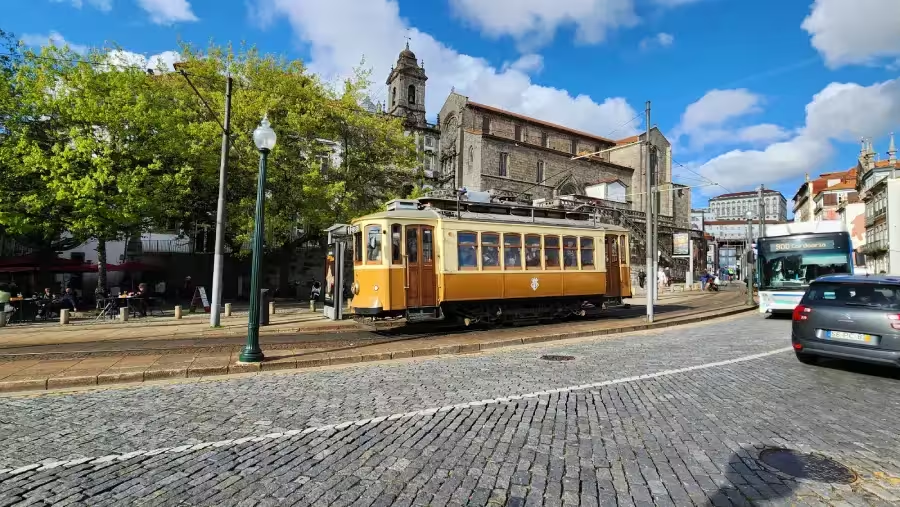
Table of Contents
TogglePORTO
Porto: The Heart of Northern Portugal
Early History
Porto’s origins date back to antiquity when it was settled by Celtic tribes. The Romans later established a settlement called Portus Cale which is believed to be the origin of the name “Portugal.” Strategically located at the mouth of the Douro River, Porto became an important port for trade and military purposes during Roman rule.
Medieval Period
During the early middle Ages, Porto played a key role in the Christian Reconquista against the Moors.
In 868, Vímara Peres, a nobleman under King Alfonso III of Asturias, reconquered the region and founded the County of Portucale, which eventually evolved into the Kingdom of Portugal. The city’s fortified walls were expanded during this period to protect against Moorish invasions.
Age of Exploration
In the 15th and 16th centuries, Porto emerged as a hub for maritime activities. Its deep-water harbor facilitated shipbuilding and trade, particularly in wine, textiles, and salt.
The city’s association with port wine began in the late 17th century when English merchants sought refuge from French wars and discovered the region’s robust red wines. To preserve the wine during long sea voyages, brandy was added, creating what we now know as port wine.
Modern Era
Porto survived several sieges and conflicts, including the Napoleonic Wars and the Portuguese Civil War (1828–1834). During the latter, Porto served as a stronghold for liberal forces opposing the absolutist regime.
In the 20th century, Porto modernized while preserving its historic charm, becoming a UNESCO World Heritage Site in 1996.
How to go to Porto City Center
From the airport there is 3 options.
Metro:
The most easy and cheaper option is the metro, the metro line from the airport run every 20-30 minutes.
The ticket price is 2 euros, when buy the ticket you need a 4 zones ticket.
Taxi:
The taxi station is at the opposite of the arrival terminal building and cost an average of 30 euros and take about 20 minutes.
Bus:
Due to the excellent and cheap metro connection, the bus is the less obvious option
Here the bus website ink for the STCP.
Bus also are very convenient and is a great combination with the metro to visit Porto
Travelling in Porto Using Public Transportation:
Metro system:
In Porto there is 6 metro lines, if your hotel is in center, the metro is probably the most and cheaper way to travel in Porto.
The metro open at 6am and close at 1am.
Trams line:
In Porto there is a very beautiful old tram, there is only 2 lines,
You need to buy the tickets directly from the drivers.
Line 1:
Departs from the Quay in the old center at the Igreja de Sao Francisco
A single ride is 3,50 euros, 2 trips same day 6 euros, 2 days adult 10 euros.
Free if you have PRT1 PRT2 or Andante card.
Line 28:
Depart at Torre dos Clorigos, both routes drive to the coastal district of ZOZ and will end at Passero Alegre, where you can take a nice walk.
Traveling in Porto using the public transportation, you have 3 options,
The Porto Card:
The Porto card maybe interesting if you use a lots the public transportation.
You can choose 1,2,3,4 days card.
This include free Porto public transportation, metro, Stcp buses, Cp trains and entrance of 6 different museums.
The casa do infante, casa museu Guerra Junqueiro, casa museum Marte Ortigao Sampario, Museum Romantico, museumdo Papel Moeda, Museumdo vinho de Porto and also you can have a discount on more than 170 sites.
The Andante Card
Is a rechargeable ticket that allow to travel on the entire public Transportation network of the city.
You should always validate your trip at the yellow machine and at the readers when boarding the bus.
There 2 types of Andante card
Andante tour card
Is the card created for the tourist and is sold for a period of 24 or 72 hours.
This card activate a countdown clock the first time is validate, it’s always mandatory to validate the Andante card at the yellow machine or at the bus readers.
Prices tour 1: 24 consecutive hours 7 euros
Prices tour 3: 72 consecutive hours 15 euros
Where to buy the Andante tour card?
In the Andante store, station Trindade, Campanha, hospital Sao joao and casa da musica.
In the official tourist information booth in Porto and at the airport. I bought the 72 hours version.
The Andante card
This one is used by the locals, it’s a blue card, you can recharge individual trips or a 24 hours pass (Andante 24).
With this card you can ride all the Porto public transportation, metro, buses, and city tram.
The empty card cost 0.60 euros.
The prices of the trips, vary according to the number of zone you use
1 and 2 zones = 1.20 euros
3 zones= 1.60 euros
4 zones = 2 euros
When buy the Andante card and by 10 trips at once, you have an additional trip for free.
Hop on Hop off Buses.
There is 2 different companies
The red and the Gray line
Porto Hop-On Hop-Off Bus Tours – Prices, routes and timetable
I bought the 48 hours + cruise one +wine tasting, from the blue line bus,(the Gray line)
With this version you have the possibility to use it for 2 different lines, the yellow and the blue line, the most interesting is the blue line, the yellow bring you to nova vila Gaia, but the most fun to go nova vila Gaia is by crossing the Pont Dom Luis I.
Where to stay in Porto.
There is plenty of hotels in Porto, I recommend to find one close to a metro station, and the best way to visit Porto is by using the public transportation and by walking.
I slept at the Fontinha hotel, between the Marques and the Faria Guimataes Metro Station.
Very good location, is only 2 metro station from the main station, Trindade
The room cost an 143 Euros per night or 163 US dollar, plus taxes.
ATTRACTIONS:
- Following this is only few attractions in Porto.
- Overview: Porto, Portugal’s second-largest city, is a UNESCO World Heritage Site renowned for its historic center, iconic bridges, and port wine production. The city sits along the Douro River, which flows into the Atlantic Ocean.
- Ribeira District: A colorful riverside neighborhood with narrow streets and traditional houses.
- Dom Luís I Bridge: A double-deck iron bridge offering panoramic views of the city.
- Livraria Lello: One of the world’s most beautiful bookstores, often cited as an inspiration for J.K. Rowling’s Harry Potter series.
- Port Wine Cellars: Visit Vila Nova de Gaia across the river to tour historic cellars and taste authentic port wine.
The Cathedral:
To go to the cathedral, take the metro to the Sao Bento train station, is about 5 minutes’ walk, when exit from the metro station go up to the hill.
The most interesting part in the Cathedral visit is the cloister, with the nice walls covered with tiles, also from the top of the tower, we have a beautiful view of Porto.
The inside the church was closed for a mass at that time, so I went another day to visit it.
Catedral do Porto (Portugal): Hours, Address, Attraction Reviews – Tripadvisor
Next to the Sao Bento train station there is the Time out market, which is a food court.
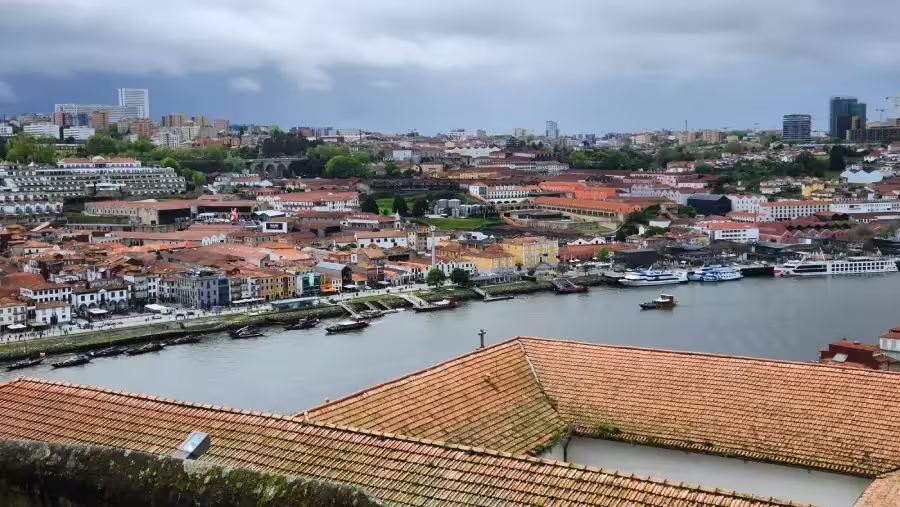
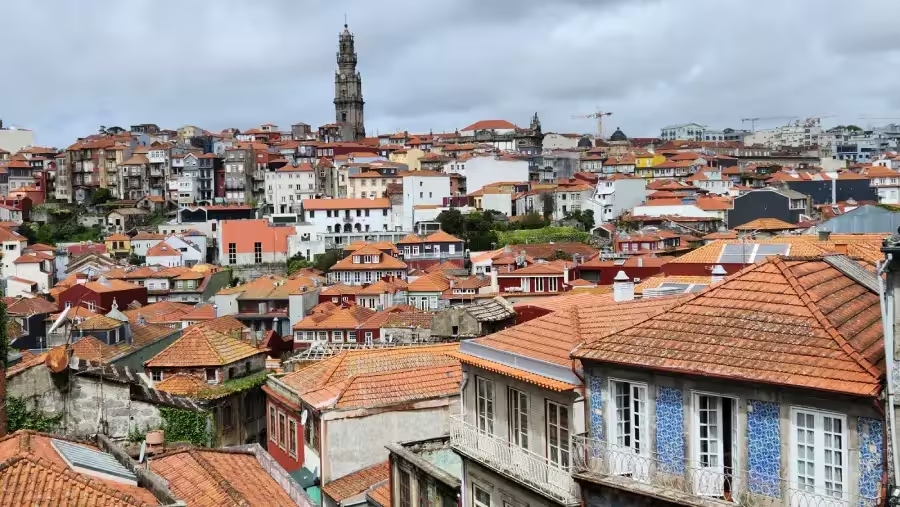
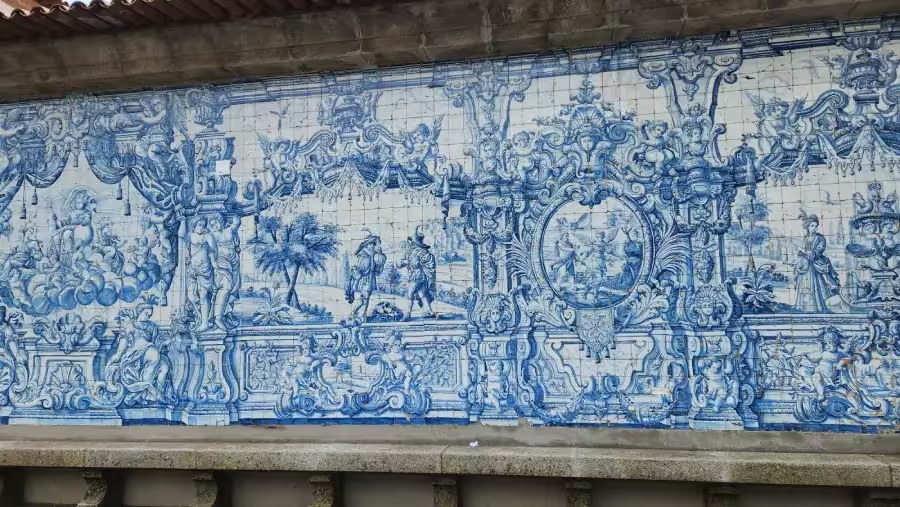
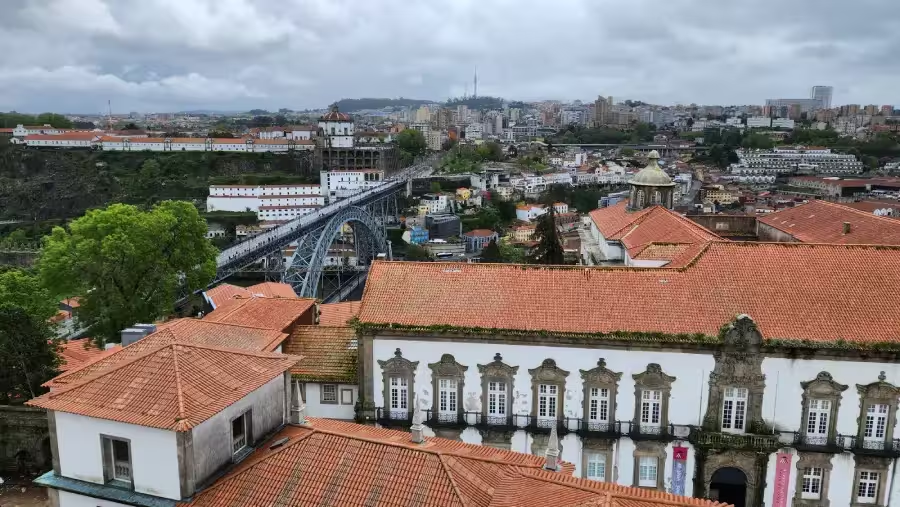
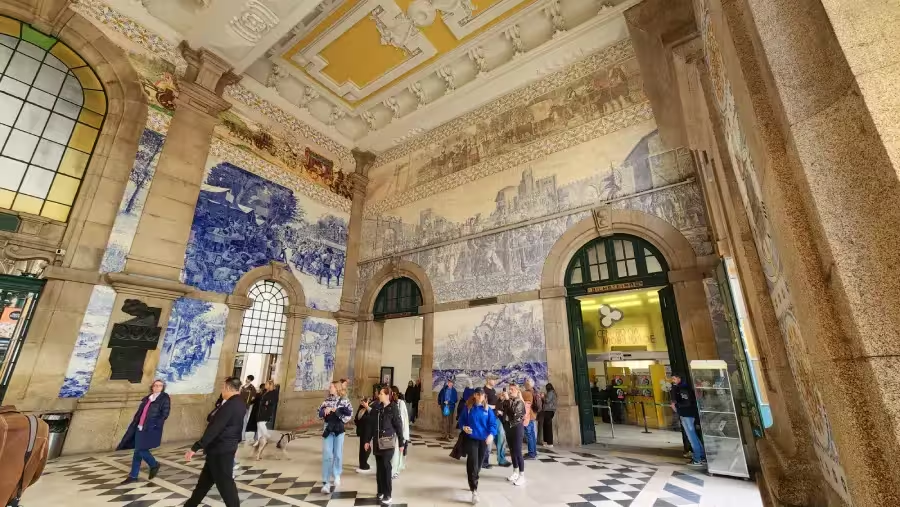
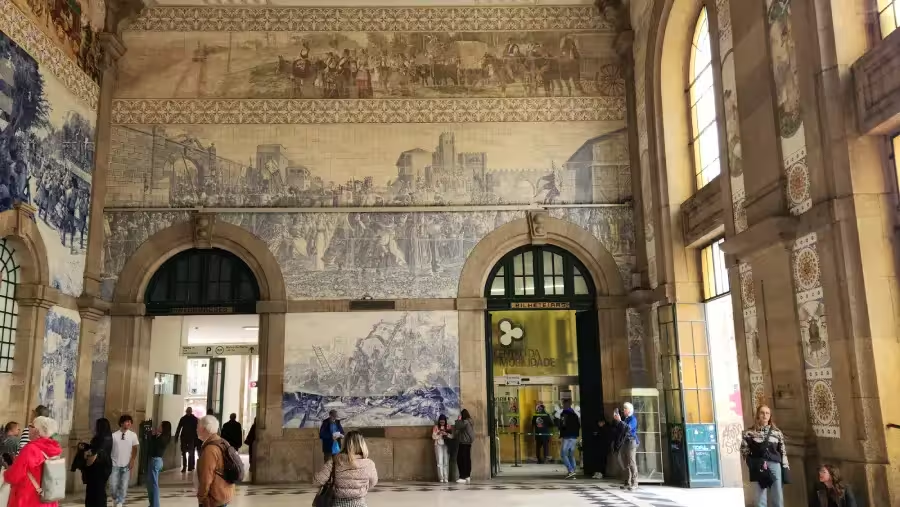
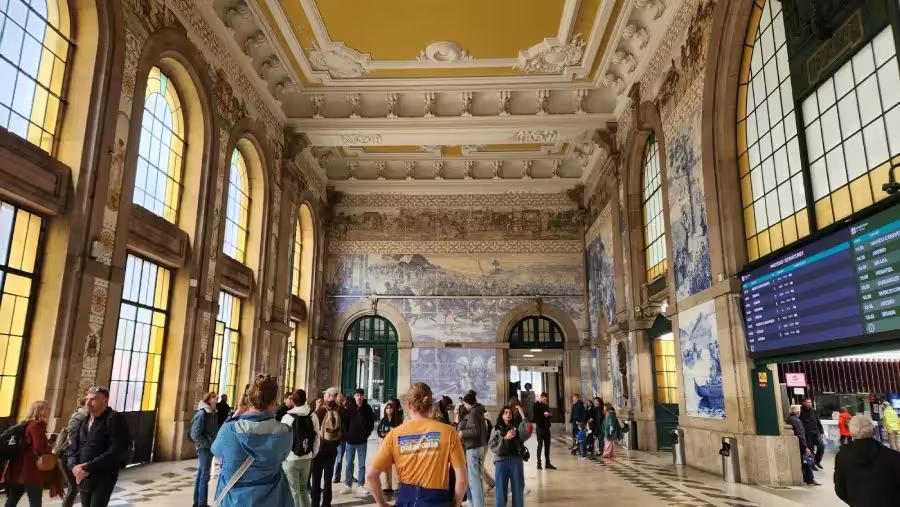
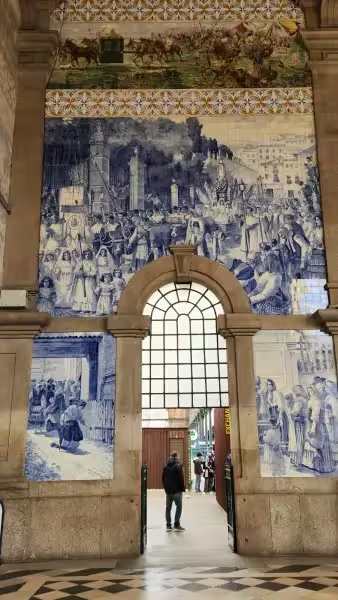
The Mercado Ferreira Borges:
This market wasn’t very interesting and the food not exciting at all, also in the market there is lot’s clothing and cheap jewelry.
For lunch I went to the restaurant IMPAR, next to the Sao Bento train station,
Very nice deep fried sardine, octopus salad, the Portuguese specialty the bacahlau (cod) croquettes, not very expensive all that for only 31 euros, 48 $C or $35 US
Ribeira promenade:
The Ribeira promenade is maybe the busiest place in Porto, with a lot’s of restaurant and some little souvenir shops.
From there, a short walk bring you to the famous double deck bridge, the Pont Dom Luis I, which was designed by Theophile Seyrig a Gustave Eiffel associate.
To cross the bridge, you can cross from the top part of the bridge, or using the bottom from the Ribeira promenade and also you can use the metro.
On the other side of the bridge there is the Vila Nova Gaia, is peppered with cellars offering tours and Porto wine tasting, with café terraces and expansive views across the Douro River.
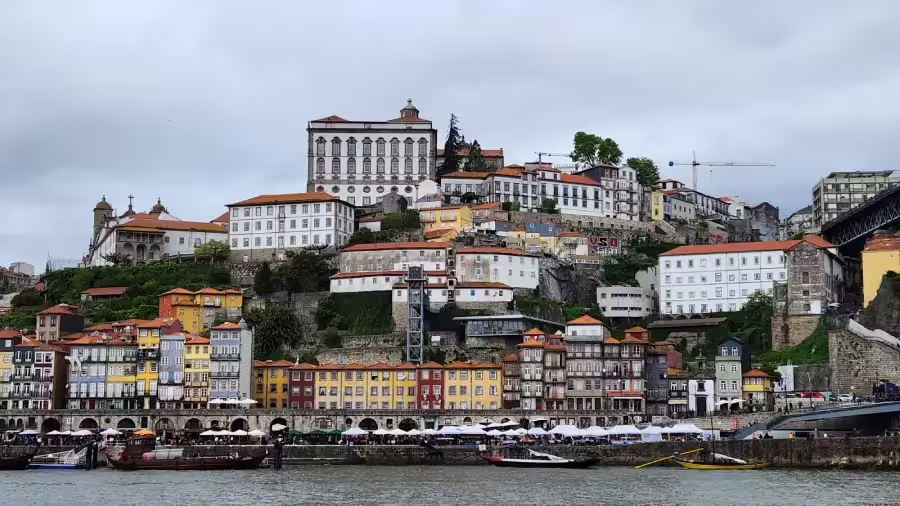

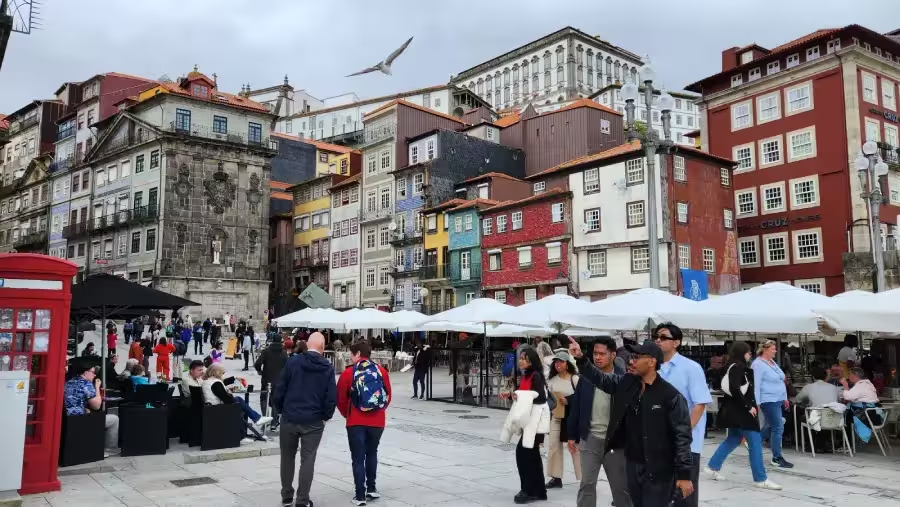
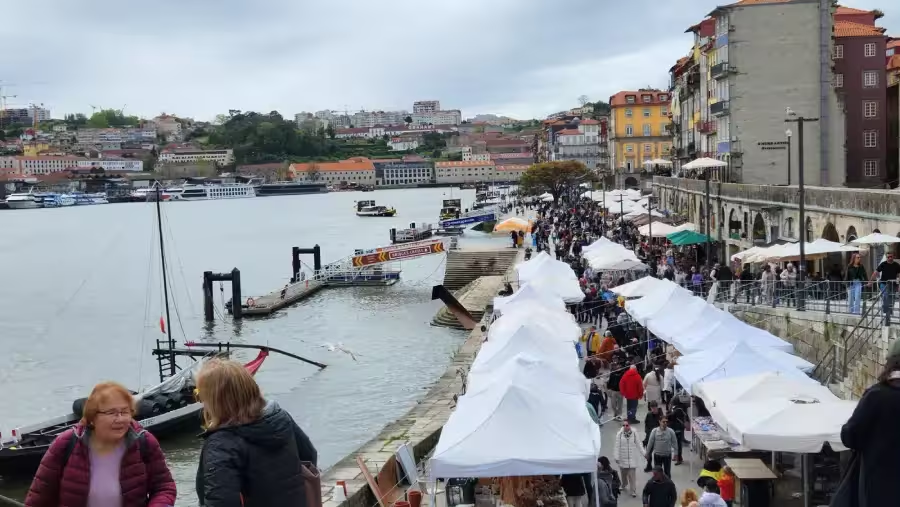
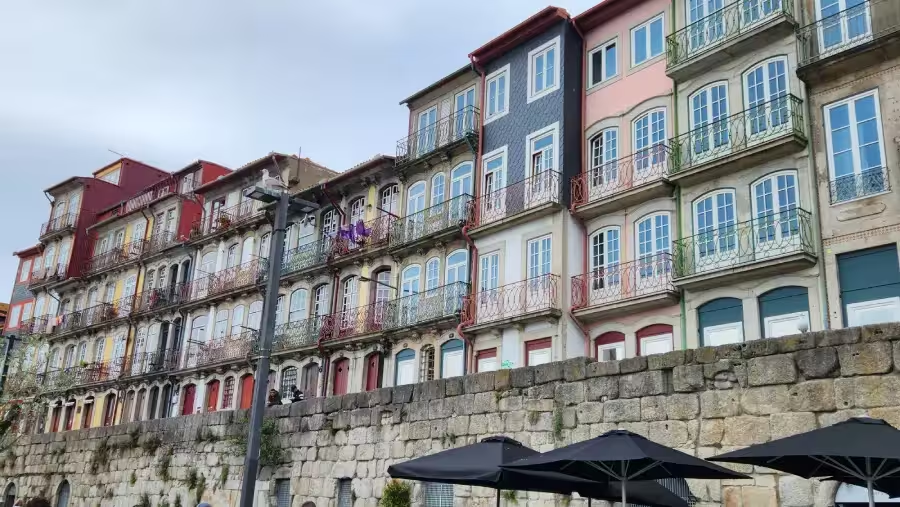

Mercado Bom success:
To go to the Mercado Boom success, I personally used the hop on hop off bus which have a stop at the Casa Da Musica, otherwise use the metro to the Casa Da Musica station, all the 6 metro lines stop at the Casa Da Musica station.
The Mercado is very nice and very clean market, with a lots of food choice.
I went there for lunch, I ate the a prosciutto board, the famous stuffed crab which was very good, very creamy and also I tried the percebes (gooseneck barnacles) and shrimps, the percebes have a very good texture but little bit salted, but very tasty.
Welcome to the Bom Sucesso Market
Then late in afternoon, we enjoyed the River cruise on the Douro river, this cruise was include with the hop on and hop off bus.
After the cruise, direction to happy hours, at the restaurant Torreao
We try the famous flamed chorizo and the bread sausage, with a beautiful glass of green wine, everything was excellent and cheap.
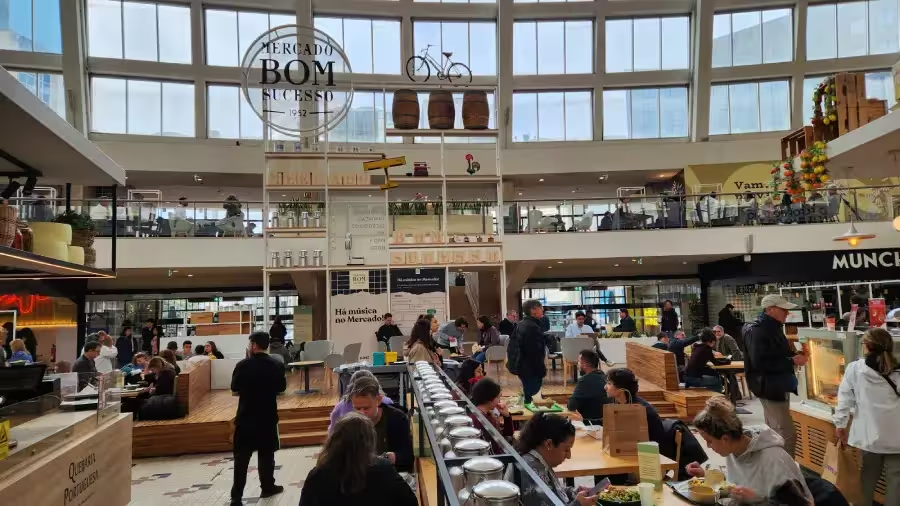
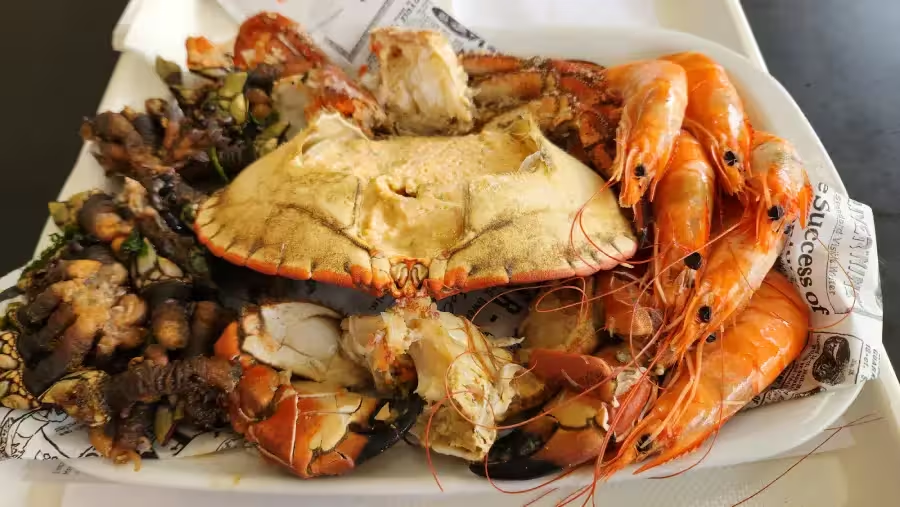
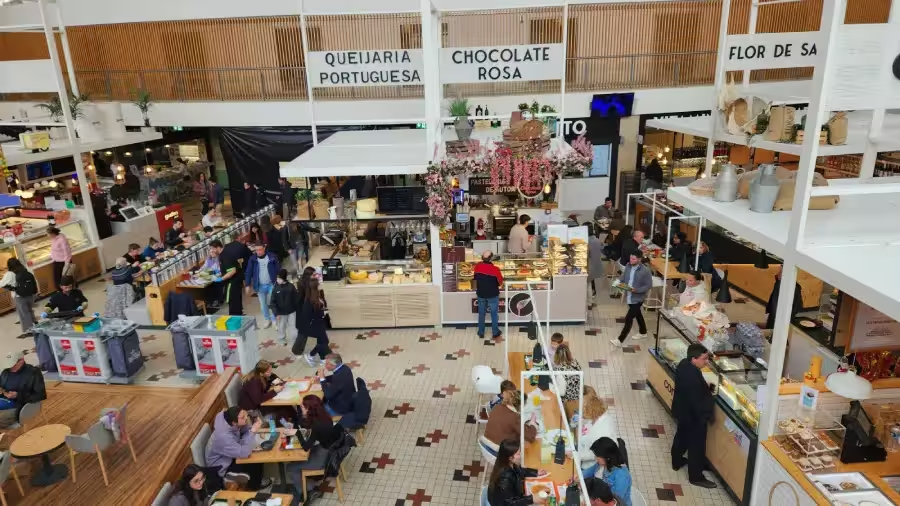
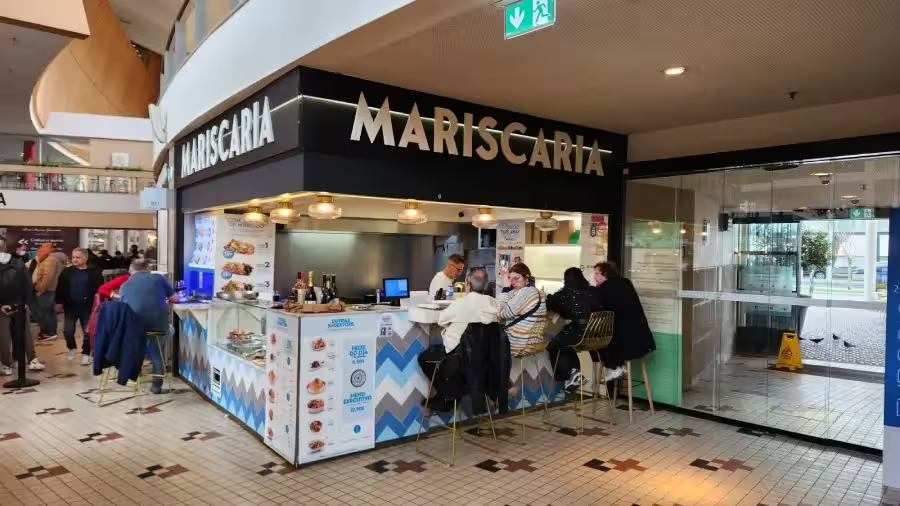
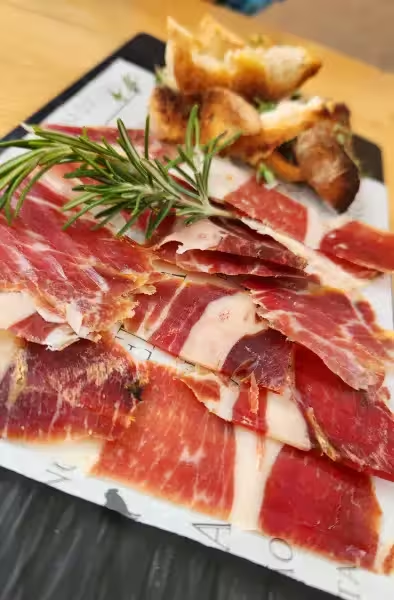

The Palácio da Bolsa:
The Palácio da Bolsa (Stock Exchange Palace) is one of Porto’s most impressive architectural landmarks.
Built in the 19th century (1842-1910) in a neoclassical style, it served as Porto’s stock exchange and commercial association headquarters.
The palace was constructed on the grounds of the former St. Francis Convent, which had been partially destroyed by fire.
The building’s most spectacular feature is the Arab Room (Salão Árabe), an extraordinary oval chamber designed in Moorish Revival style inspired by the Alhambra in Granada.
The room features intricate stucco work, gold leaf details, and stunning arabesques covering the walls and ceiling.
The grand central courtyard (Pátio das Nações) is covered by an impressive glass and metal dome, flooding the interior with natural light.
The surrounding galleries feature coats of arms representing countries with which Portugal maintained trade relations.
Other notable rooms include the Golden Room, the General Assembly Room, and the elegant Grand Staircase with granite steps and ornate balustrades.
Though no longer functioning as a stock exchange, the palace still serves as the headquarters for the Porto Commercial Association and hosts official receptions and events.
The palace is located in Porto’s historic center, is very easy to find, is next to the Praca do infant D Henrique, is about 10 min walk from the Ribeira promenade, near the Igreja de São Francisco.
Visiting the Palacio do bolsa:
Entrance fee 14 Euros regular fee, 16 US, but only 9.50 Euros for seniors or 12 US.
Videos was not allowed but photos yes, the guide was very entertaining.
The visit last about 30 min, when buying the ticket, be patient because there is a big line up.
There is a limited number of visitors for each visit, there is a new visit every 30 min.
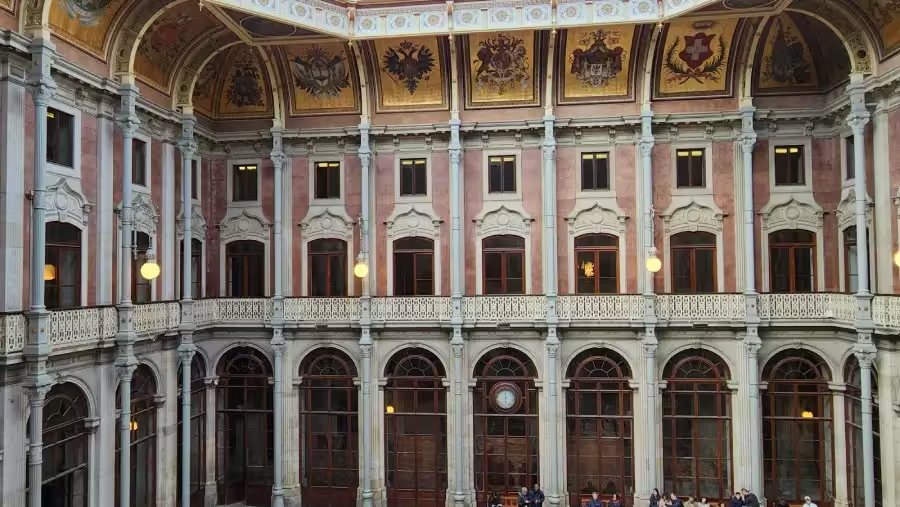
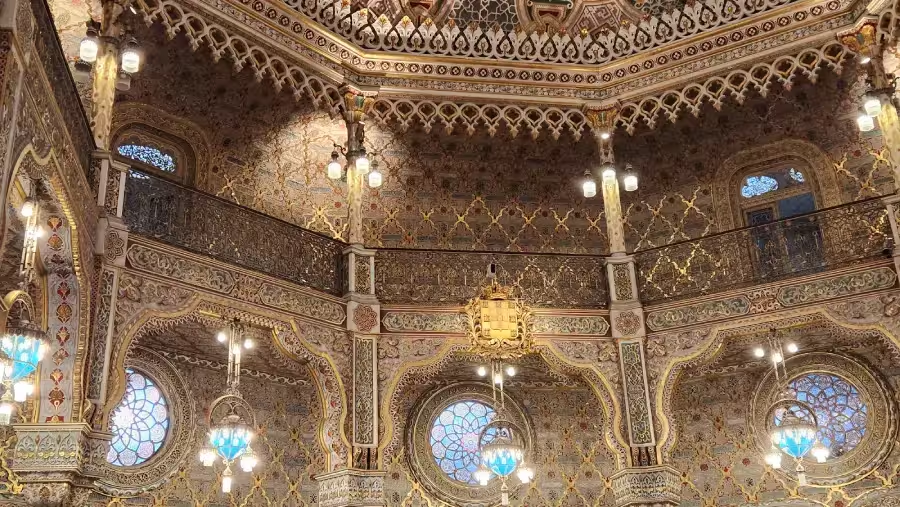
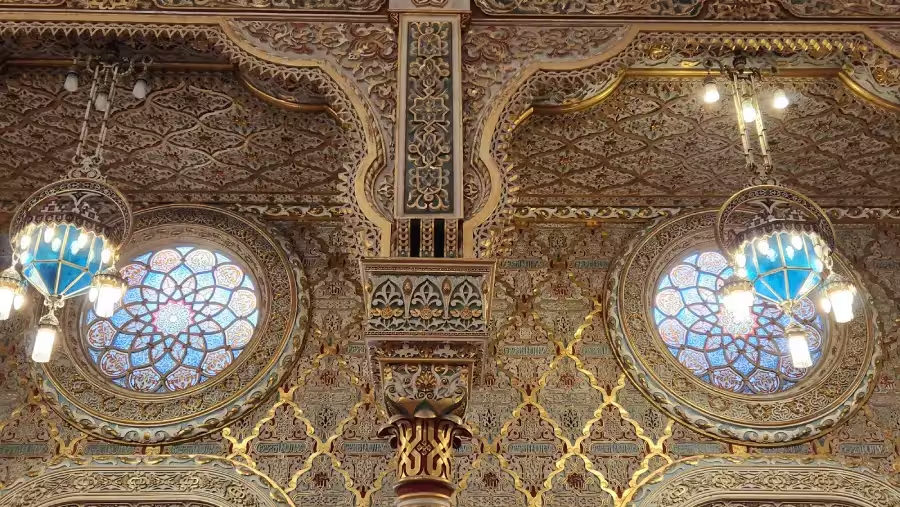
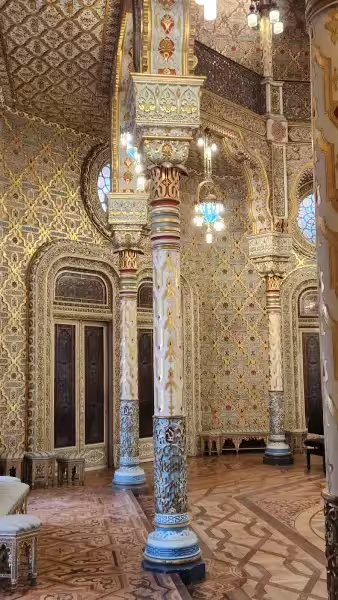
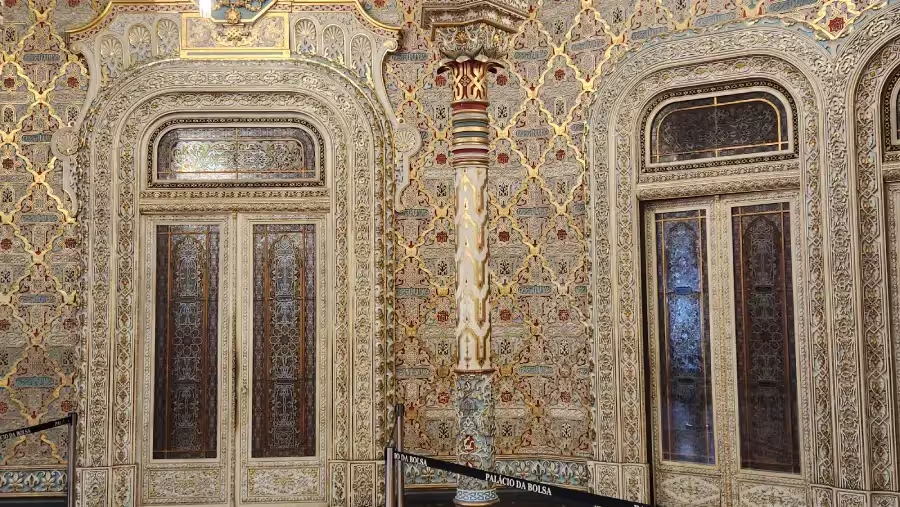
Igrega Sao Francisco
The church dates back to the 14th-15th centuries and is considered Porto’s most prominent Gothic monument, though it contains Baroque elements from later renovations.
What truly sets São Francisco apart is its extraordinary interior decoration – almost every surface inside is covered with intricate gold leaf woodwork (talha dourada).
It’s estimated that over 400kg of gold dust was used in this lavish decoration, earning it the nickname “Church of Gold.”
The interior features elaborate wood carvings depicting religious scenes, flora, fauna, and mythical creatures.
The “Tree of Jesse” altarpiece is particularly famous.
Beneath the church lies an eerie catacombs area with a small museum containing artifacts and tombs of monks and noble families.
While the exterior has a relatively modest Gothic appearance, it features a beautiful rose window on the main façade.
The church is located in Porto’s historic center, not far from the Ribeira district and the Dom Luís I Bridge, making it easily accessible for visitors exploring the city.
Personally for me, is not really worth to pay 11 Euros, 13 US entry fee, visiting the Igrega sao Francisco, no photos and videos are allows.
Vila Nova Gaia
To go to the Nova Gaia, I Used the hop on hop off blue bus, using the yellow line, the one who go to Gaia side, or you also can go by walk, by crossing the Pont Dom Luis I,
Vila Nova de Gaia (sometimes just called “Gaia”) is a city located directly across the Douro River.
While technically a separate municipality, it’s closely connected to Porto and is often considered part of the greater Porto metropolitan area.
Vila Nova de Gaia is most famous for its port wine cellars (caves), where port wine has been aged and stored for centuries. Many of the world’s most renowned port wine producers like Taylor’s, Graham’s, Sandeman, and Cálem have their aging warehouses here.
The riverside area (Cais de Gaia) is quite popular, offering beautiful views of Porto’s historic Ribeira district across the river.
The Dom Luís I Bridge connects the two cities and is an iconic part of the landscape.
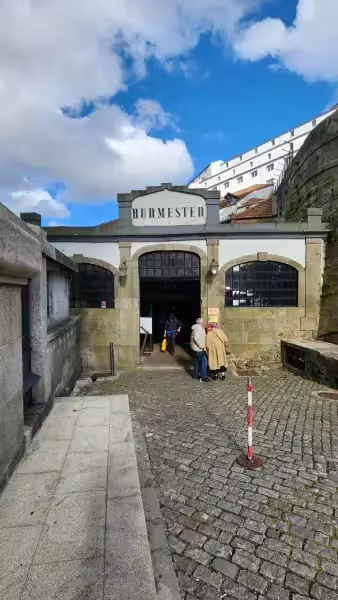
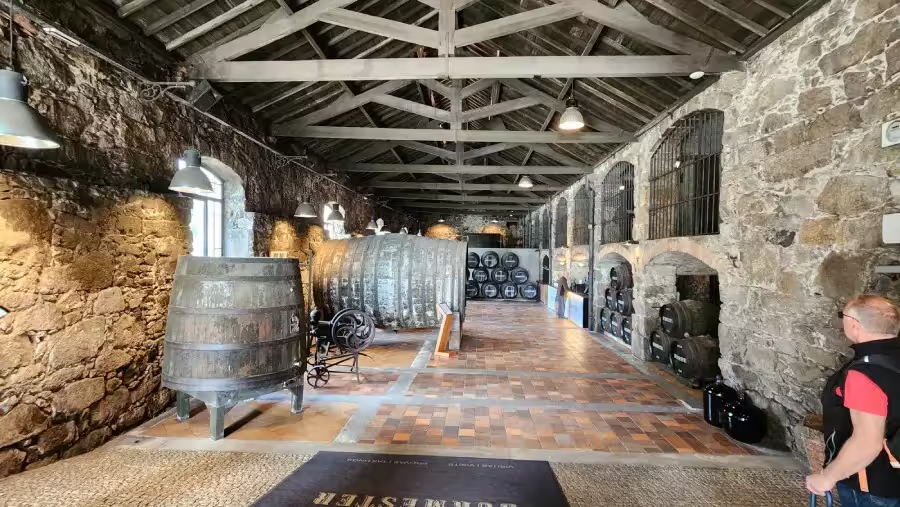
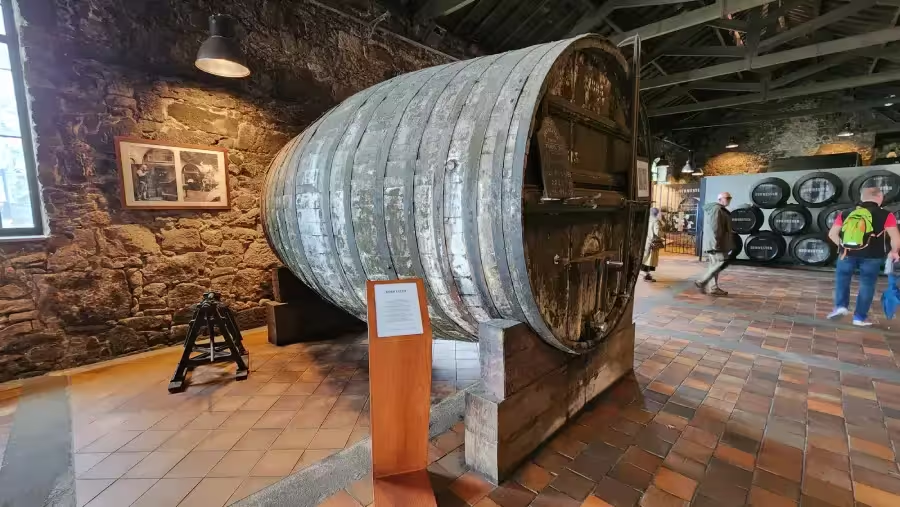
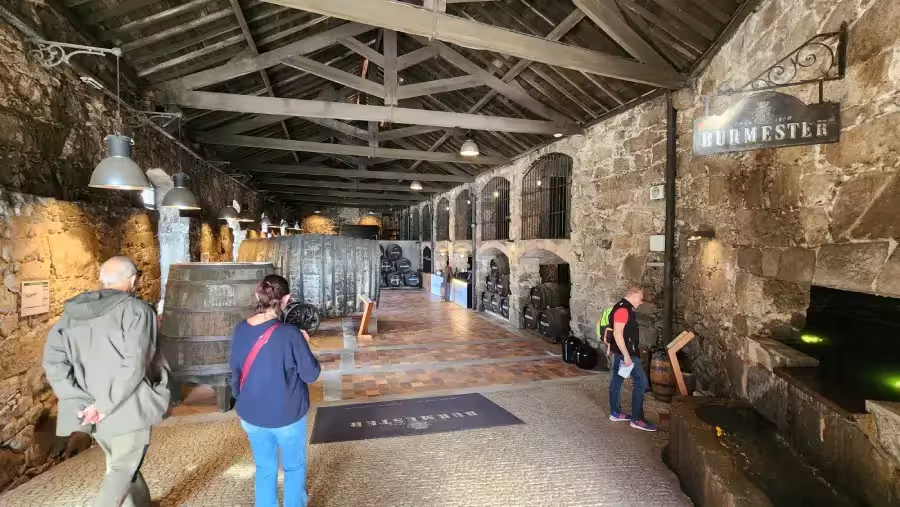
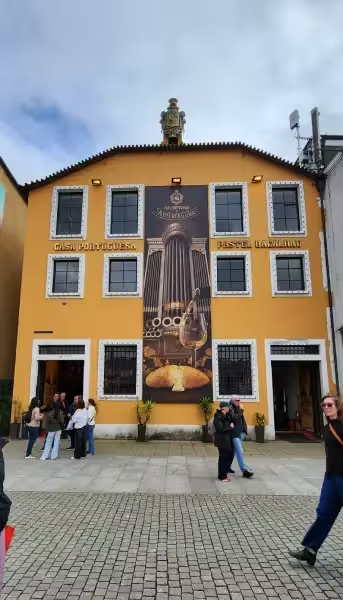
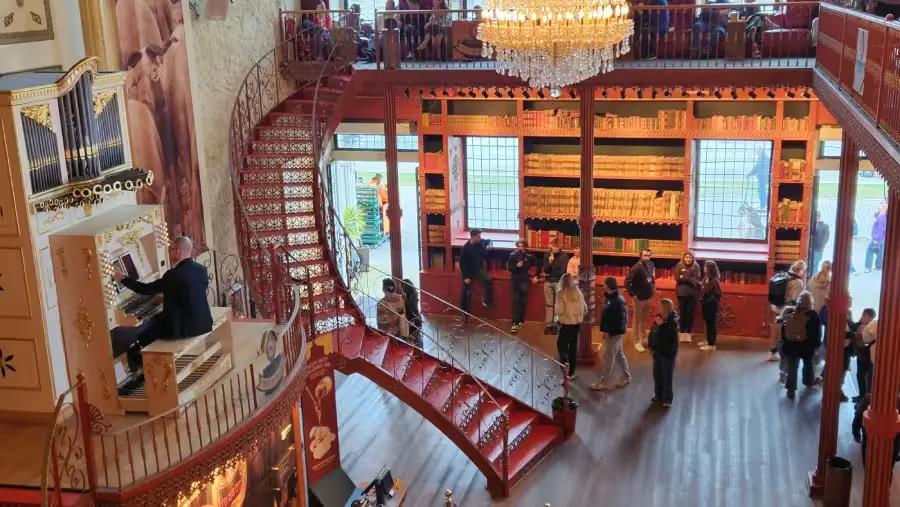
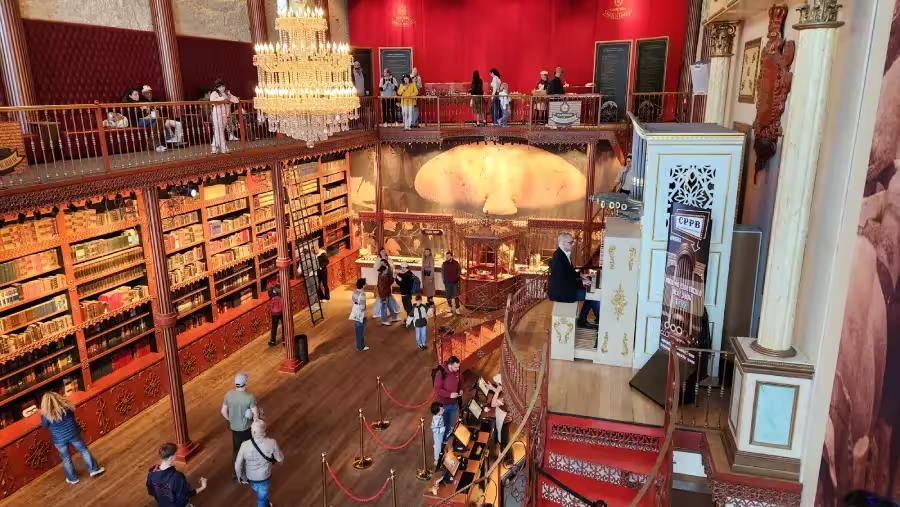

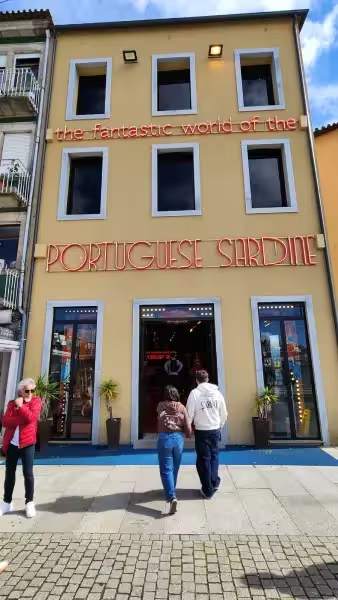
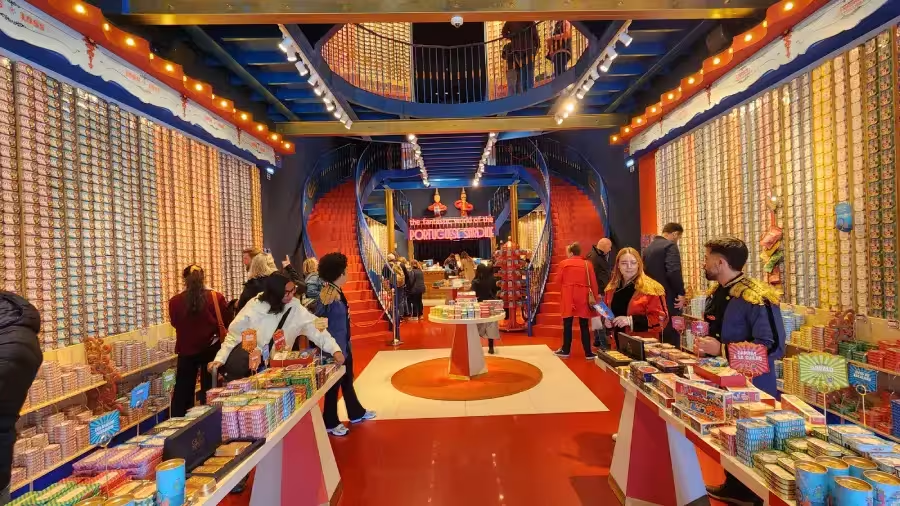
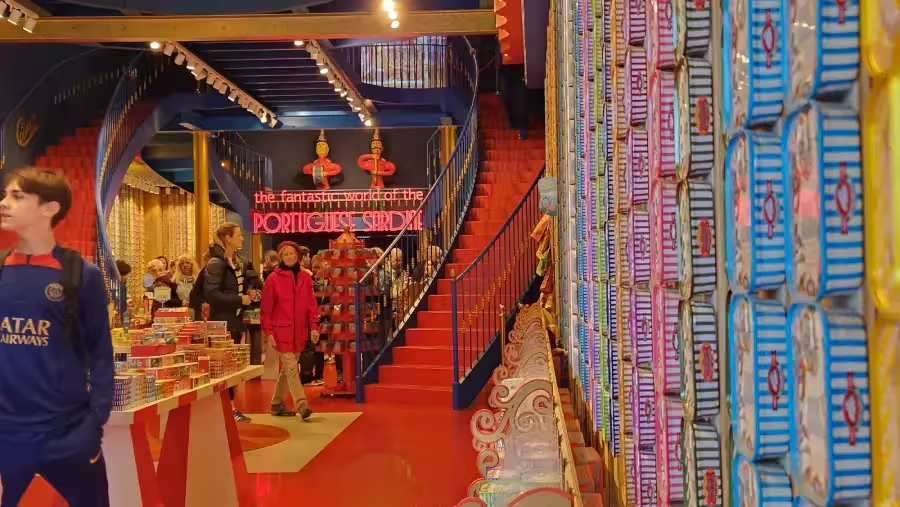
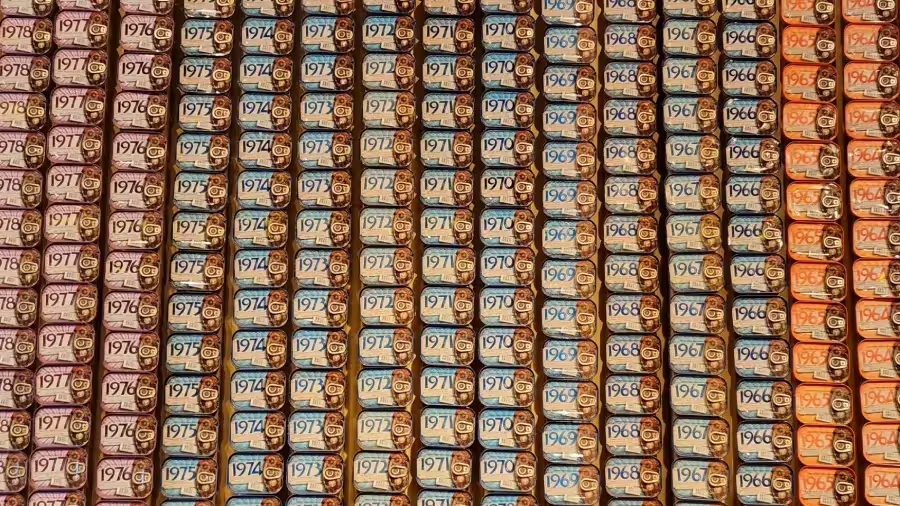
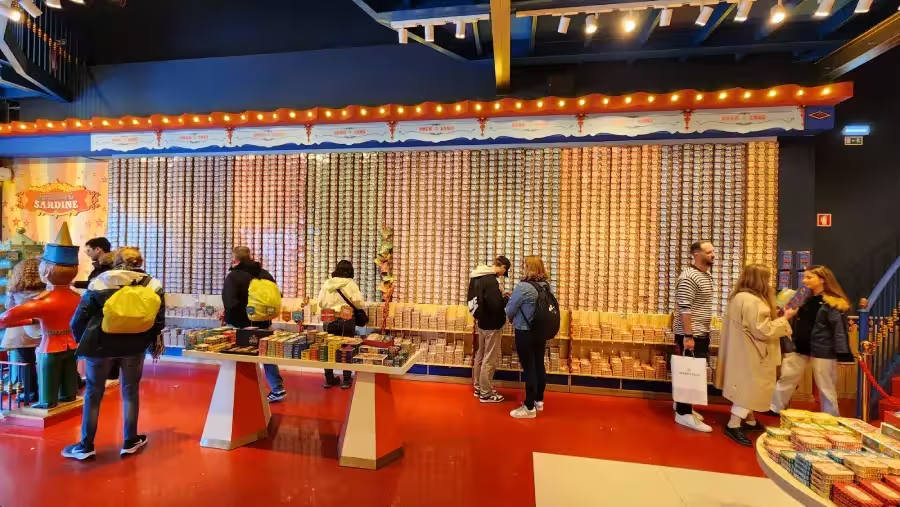
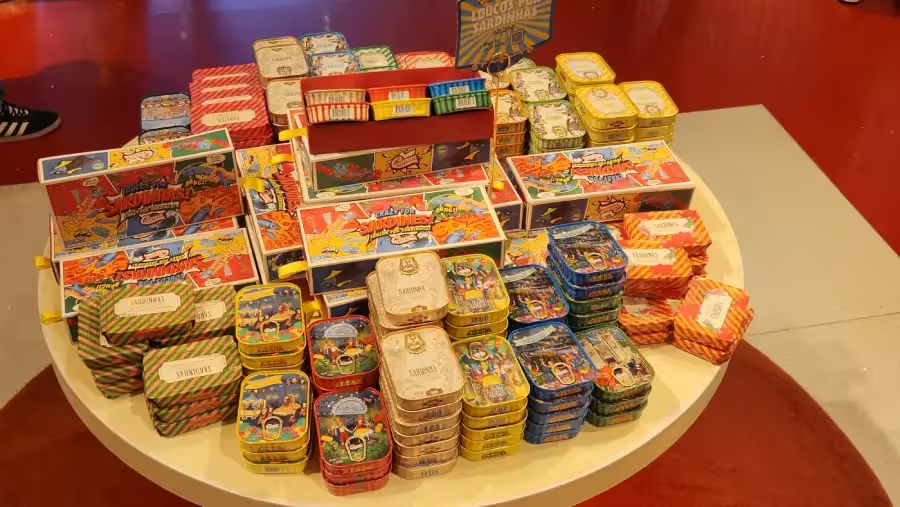
Livraria Lello
Livraria Lello is one of the most famous and beautiful bookstores in the world, located in Porto, Portugal. Built in 1906, it’s renowned for its stunning Neo-Gothic architecture and ornate Art Nouveau interior design.
The building itself was designed by engineer Francisco Xavier Esteves, and it represents one of the finest examples of bookstore architecture from the early 20th century. It’s considered a cultural landmark in Porto and continues to function as a working bookstore while also serving as a major tourist attraction.
The bookstore features a magnificent carved wooden staircase that curves gracefully through the center of the store, along with intricate stained glass ceiling panels that bathe the space in colorful light.
The walls are lined with elaborately carved wooden shelves that reach up to the ceiling, creating an almost cathedral-like atmosphere for book lovers.
Livraria Lello gained international fame partly due to its connection to J.K. Rowling, who lived in Porto in the early 1990s while teaching English.
Many believe the bookstore’s magical atmosphere and distinctive staircase inspired elements of Hogwarts in the Harry Potter series, though Rowling herself has never confirmed this connection definitively.
Due to its popularity and the influx of tourists, especially after the Harry Potter fame, the bookstore now charges an entrance fee.
However, this fee can typically be deducted from any book purchase you make. The store specializes in Portuguese literature, art books, and various international titles.
We was finally be able to visit the famous Livraria Lello, you must buy the ticket online, there is possibility to buy at the door, but it is little bit more complicate, the entrance fee is 10 Euros or 12 $US, you can redeem the 10 Euros when purchasing a book.
The library was very nice, but little bit disappointed by the size, actually is a very small store, I expected a much bigger store, but worth the 10 Euros.
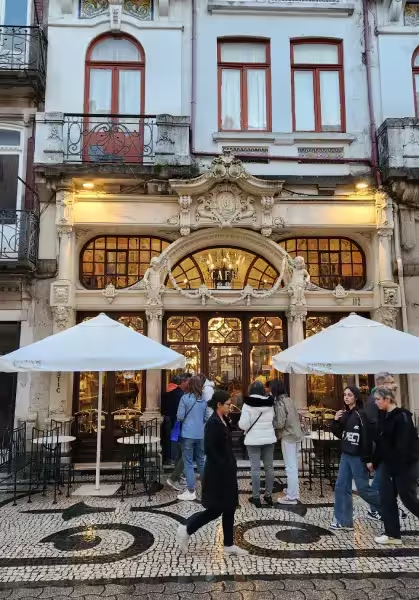
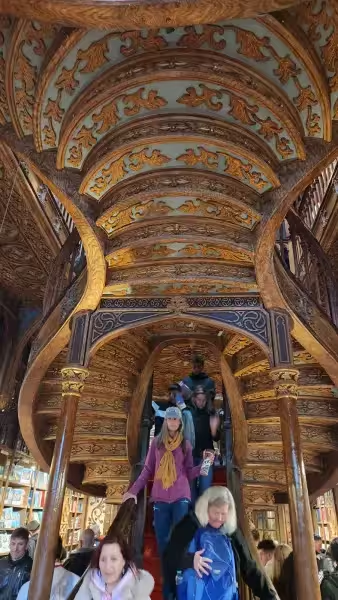
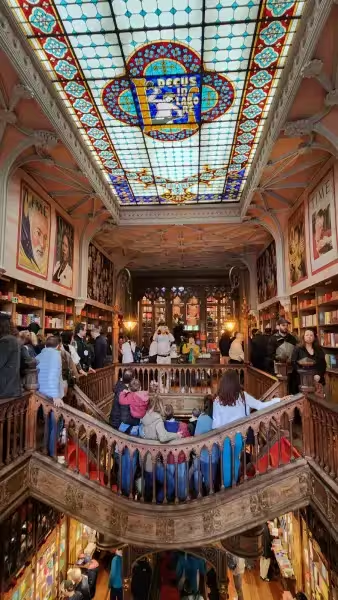
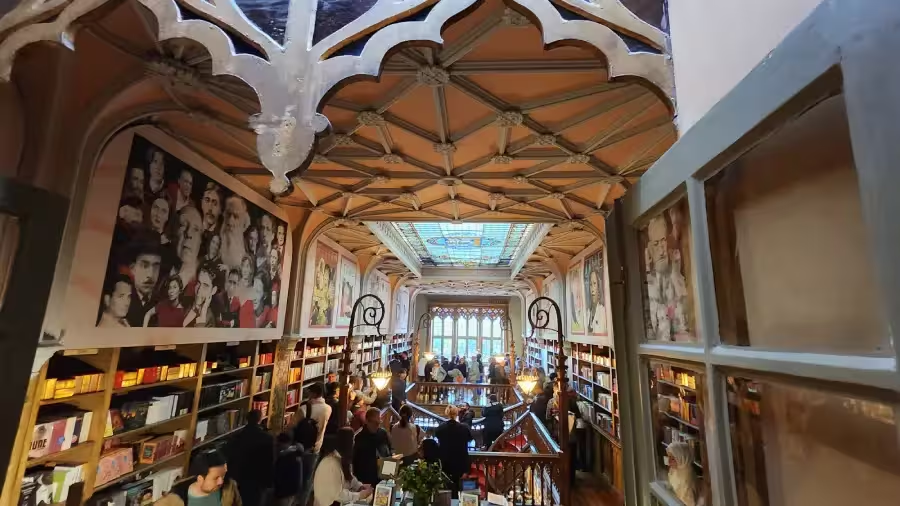
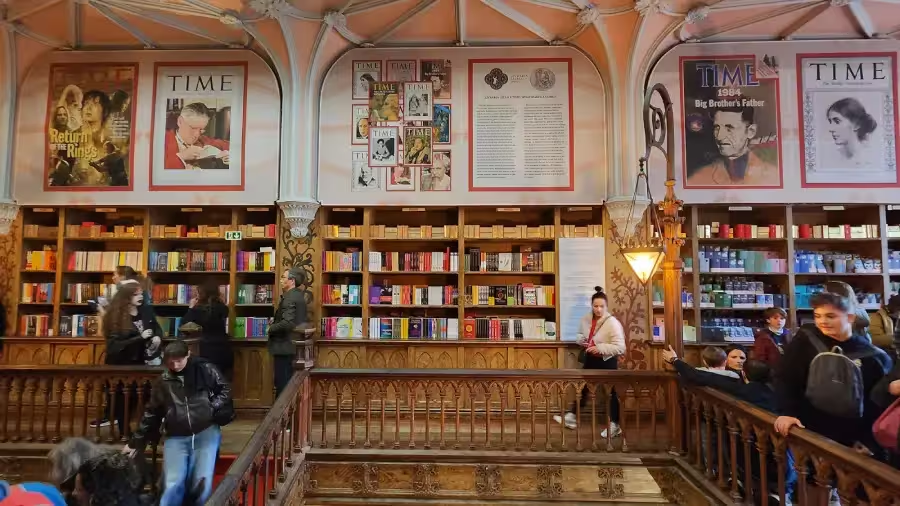
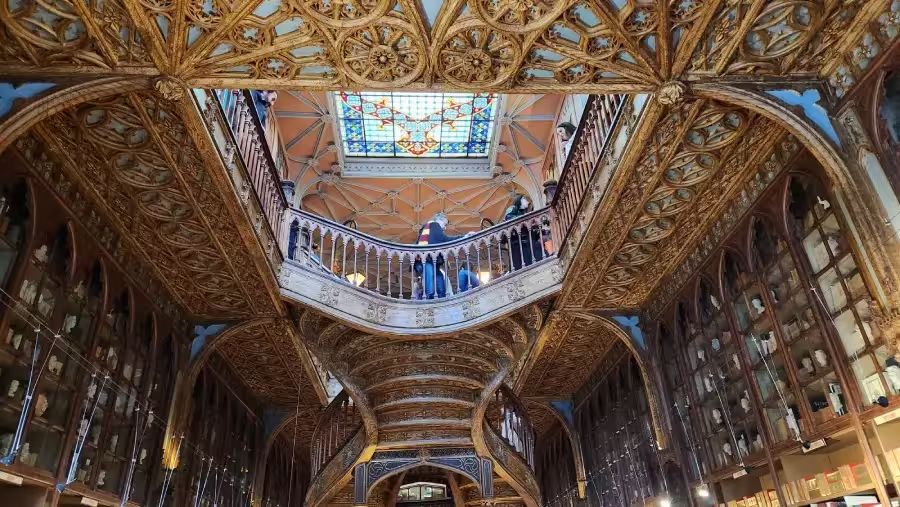
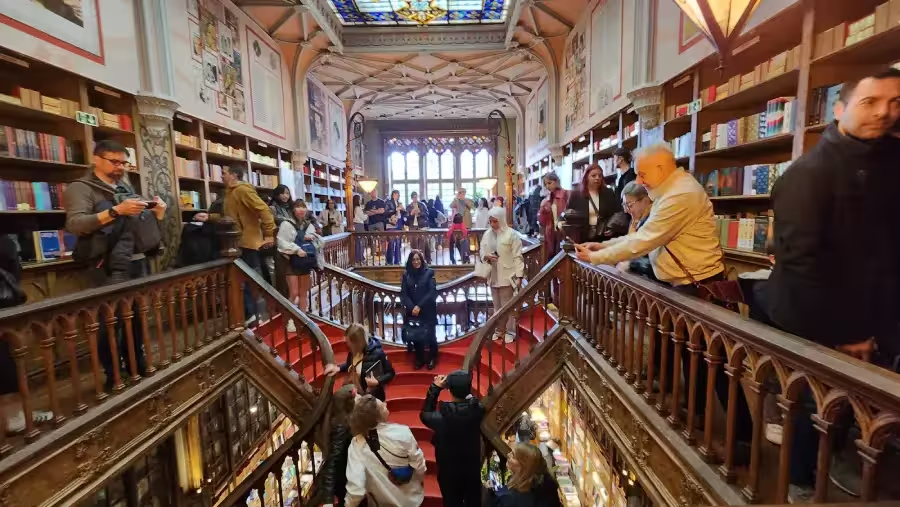
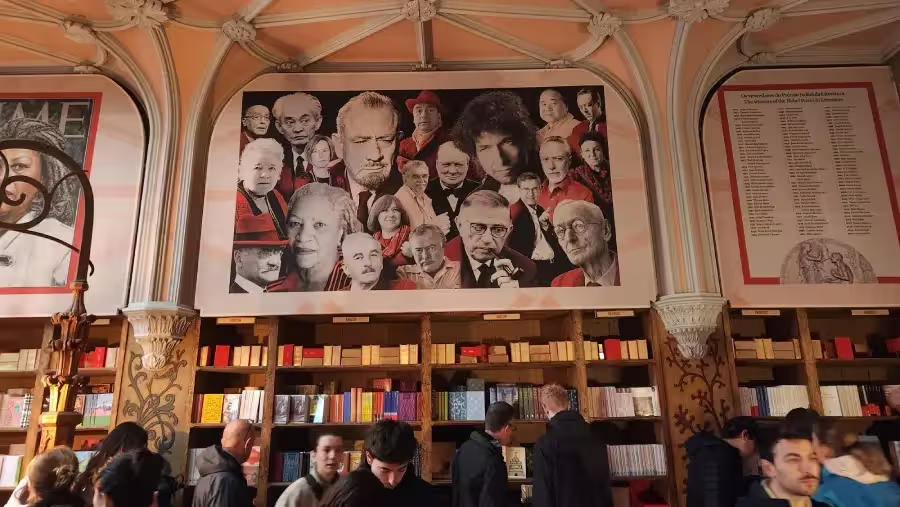
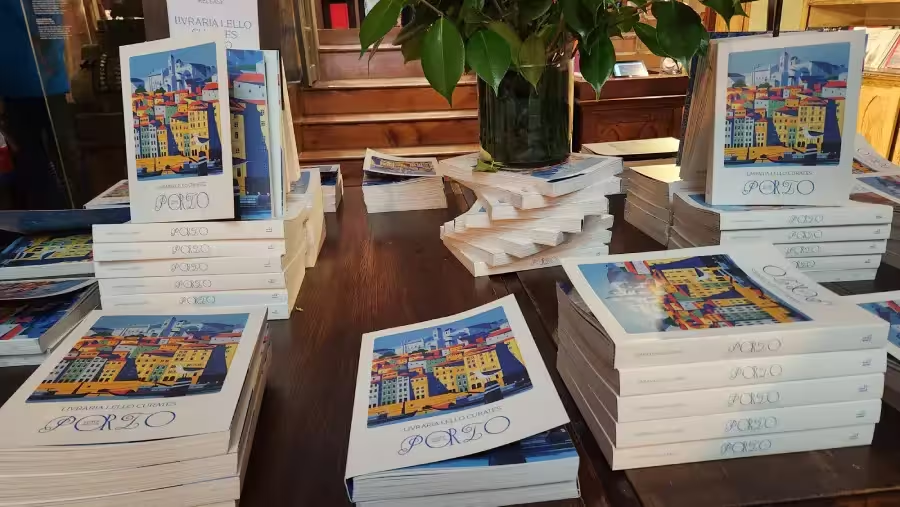
Very bad weather, we planned to go to discover the street art, but due to the bad weather, we cancelled.
We took the opportunity to visit, this time inside the cathedral, which is nice.
Between two shower. We decide to visit the Clerigos church tower.
Palacio crystal garden
The gardens are located in a prime area of Porto and make for a perfect retreat from the bustling city. To go there you can take the Tram 18, or the bus 900.
They’re free to visit and particularly beautiful in spring when many of the plants are in bloom.
The Jardins do Palácio de Cristal (Crystal Palace Gardens) in Porto are among the city’s most beautiful green spaces.
These stunning gardens offer breathtaking views over the Douro River and the city.
Originally built to house the Crystal Palace (Palácio de Cristal), which was inspired by London’s Crystal Palace, the actual palace structure was demolished in 1951 and replaced with the dome-shaped Pavilhão Rosa Mota (also called Super Bock Arena today), which hosts various events and exhibitions.
The gardens themselves are the real attraction, featuring:
– Meticulously landscaped formal gardens with geometric patterns
– Romantic walkways lined with camellias, rhododendrons, and other flora
– Thematic gardens including the Garden of Medicinal Plants and Garden of Feelings
– Peaceful lakes with ducks and peacocks roaming freely
– Several impressive fountains and statues
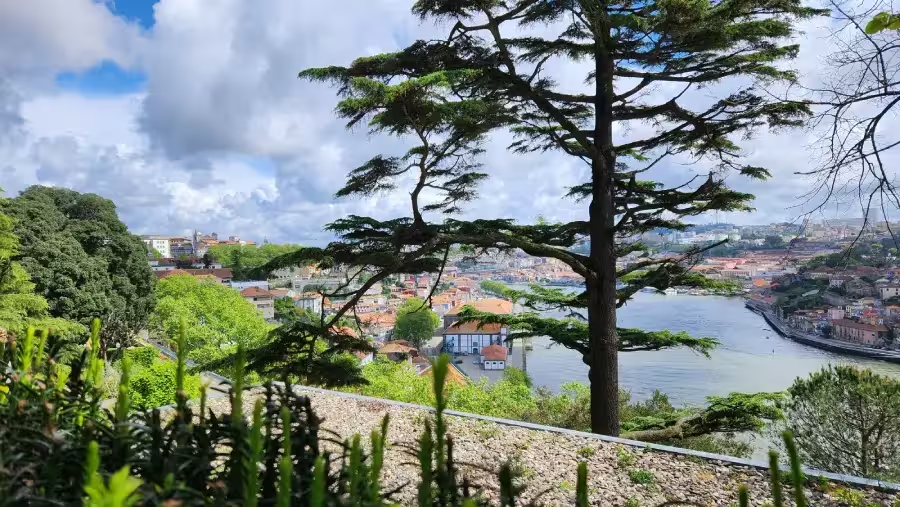
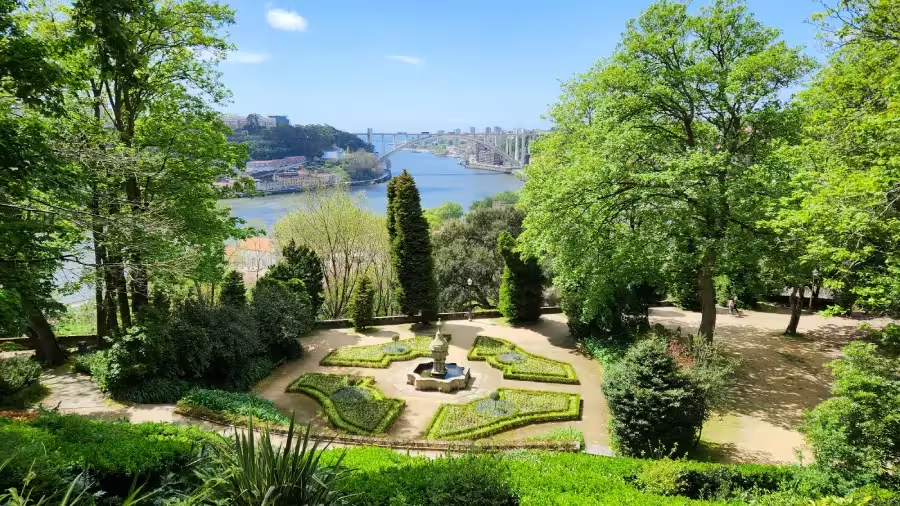
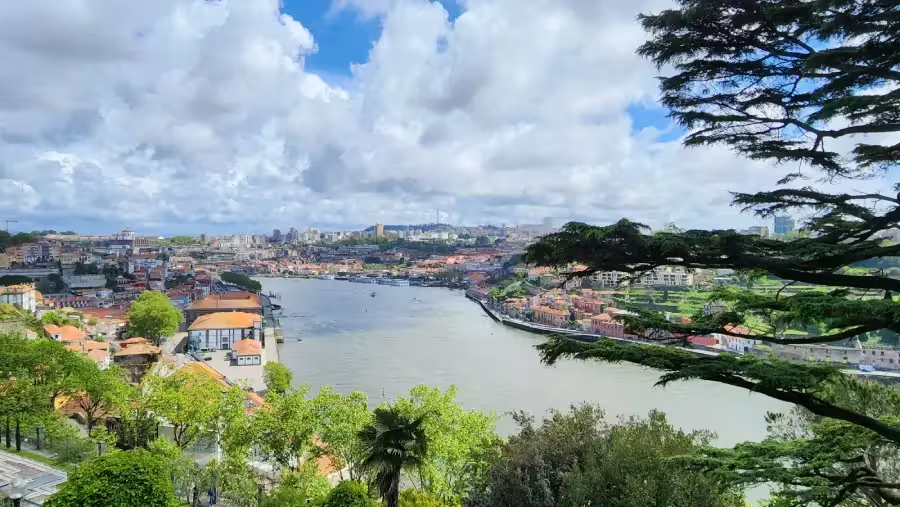


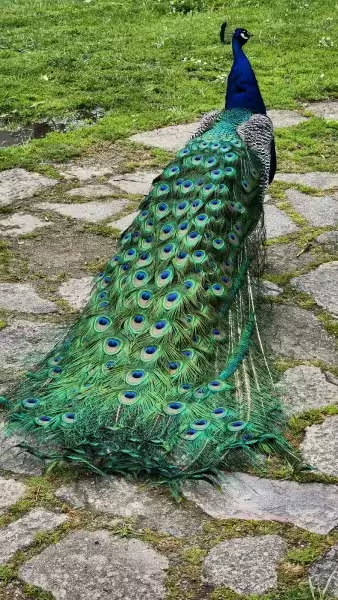
Where to eat in Porto
Metro & Mejo
Address: Rua dos Caldeireiros 14, 4050-137 Porto, Portugal
Phone: +351 933 435 364
Impar Restaurant
Address: R. das Flores 306, 4000-069 Porto, Portugal
Phone: +351 22 099 7140
Impar Flores | Porto | Facebook
Mercado Boom Success
Welcome to the Bom Sucesso Market
The Grill
Address: R. de Santa Catarina 567, 4000-448 Porto, Portugal
See April 18
Galeria Do Largo
Located in: Porto A.S. 1829 Hotel
Address: Lgo de S. Domingos 45 55, 4050-097 Porto, Portugal
Bolhao A Gosto
Bolhão a Gosto – Comida Tradicional Portuguesa
One Response